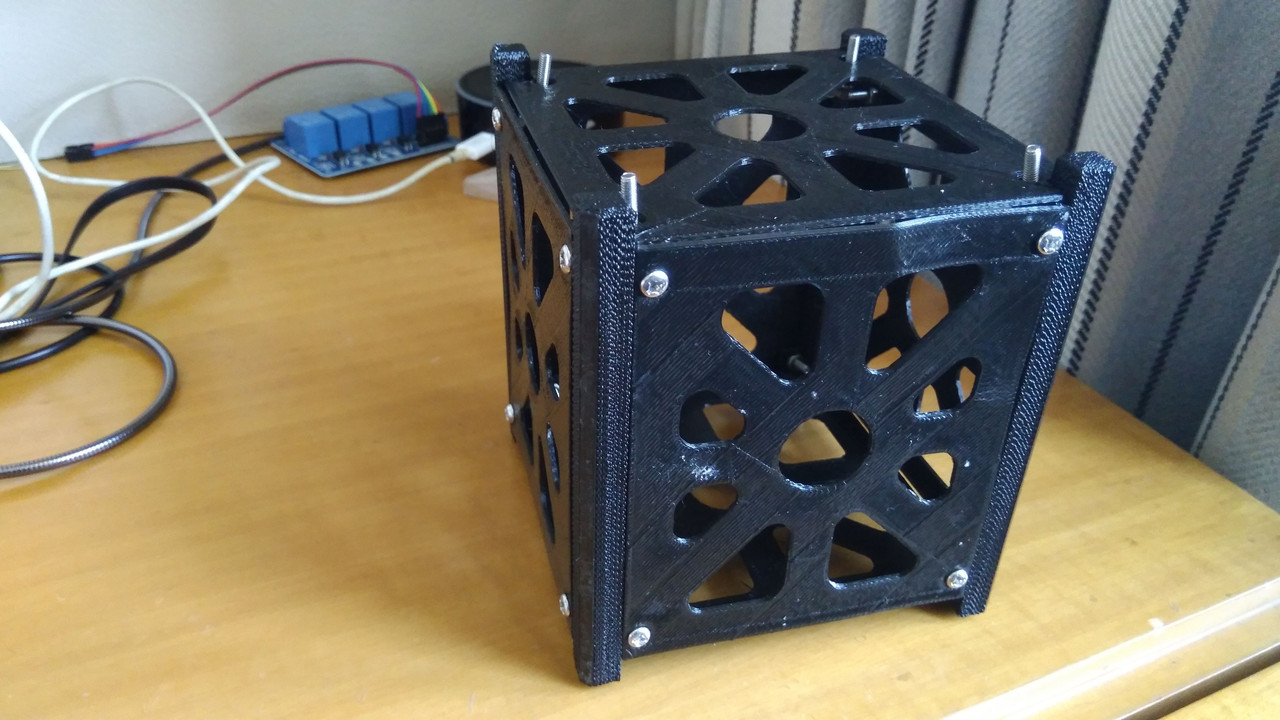CubeSat
My friend Krrish Jain and I had a common passion for robotics, and after succesfully completing several small-scale projects we turned our attention to DIY miniature satellites, which were very popular at the time.
The following is the documentation of our journey, which lasted all of high school. You can also
read the technical summary as published in a journal here.
This is the first prototype plan we drew up in the 9th grade. Back then our mission was purely scientific data
collection. As such the instrumentation and circuit diagram consisted mostly of arduino sensors and components
we had seen in other projects. Interesting to note here is the RTC, which we planned to use in order to measure
the effects of time dilation as described by relativity.

This was our first real resource for the project and a great inspiration for the remainder of our work.
It also opened our eyes to how much we had not thought about, and how difficult it is to make space-ready
electronics.

Following our research we began work on a dummy prototype, designing a 3-D printed chassis to fit
our breadboard electronics.

At this time, we had begun collaborating with the company NewSpace Research and Technologies for
professional insight and tools. Working under one of their engineers, we learned more about the parallel systems
and failsafes that we would have to work on. Taken during our time working at their headquarters, this image of the board is a surprisingly good breakdown of everything
that we needed to handle.

Another part of our work here involved using NASAs GMAT software to run mission simulations to gather important data
for our designs

One thing we worked on here outside the main satellite was the development of a ground-station with the SatNOGS software
this image shows the breadboard satellite(top) and ground station(bottom) that we used for testin.

This is a picture of the prototype satellite with a chassis of Aluminium 6061(the alloy we decided on). Based on our
simulations we were attaching the solar panels and electronics.

This is a picture of the early stages of the design of the perf-board for the electronics

While the project was on hold for a while, we decided to build an alternate version as a glider Sat, which we would use
for a low altitude test. This is the gliedr prototype

This is a video of the glider test with a makeshift parachute. It was dropped from the 19th floor with a ground station
on the floor. The test was succesful, all systems worked, and data was succesfully transmitted








